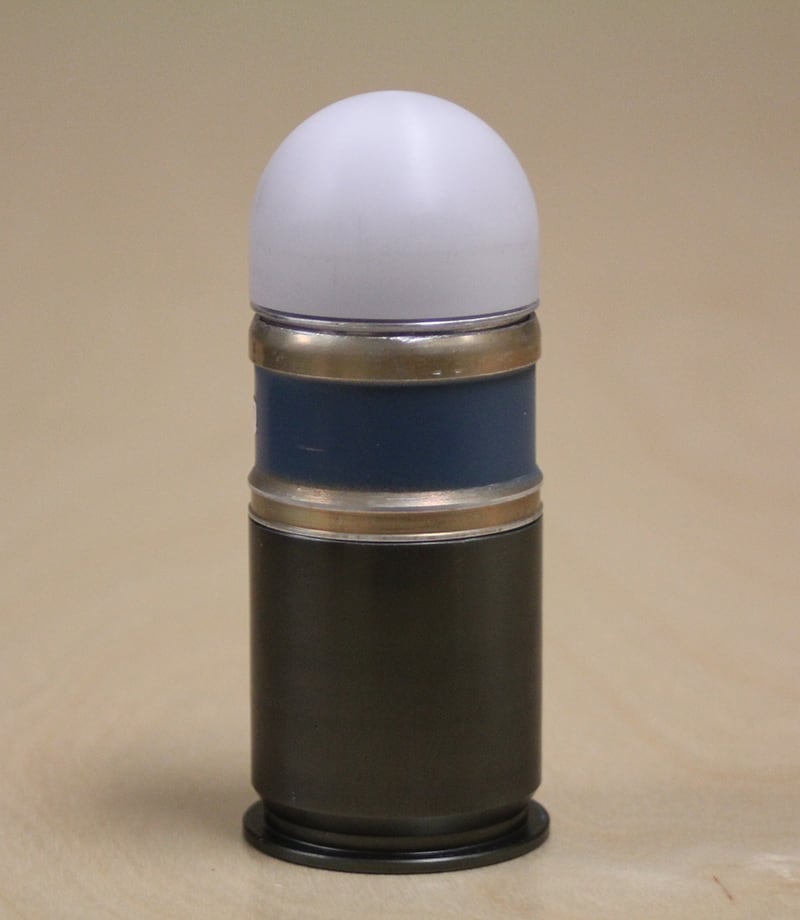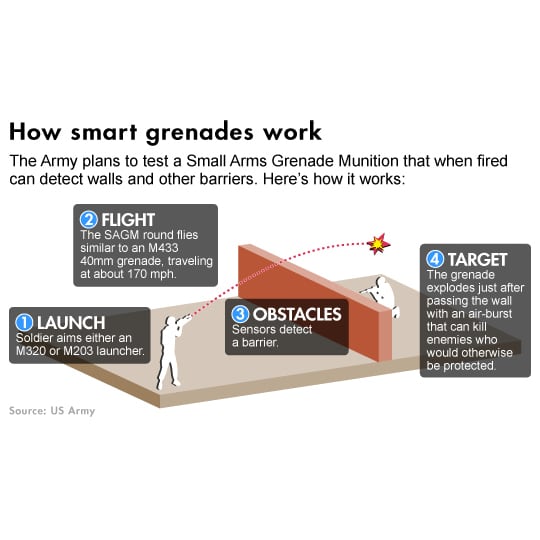The enemy can try and run from Army grenade launchers, but soon it will be a lot tougher to hide.
This summer, the military will test new grenade rounds for M203 and M320 launchers that can sense walls and burst in above an enemy's hiding place.
The technology, endorsed by all branches, is on the wish list of items for troops who want to better engage enemies in defilade, behind barriers.
The Small Arms Grenade Munition has a sensor that recognizes when it nears a wall or barrier. Developed by the Joint Service Small Arms Program at the U.S. Army Armament Research Development and Engineering Center, the 40mm grenade explodes mid-air as it passes the barrier once — no pre-programming or range-finder required.
The round "provides the small-unit grenadier with a higher probability of achieving a first-shot kill" at increased ranges, even in the case of an enemy in defilade, said Steven Gilbert, SAGM's project officer.
The SAGM round would complement, not replace, the XM-25 weapon system already in development. The XM-25 is a direct-fire weapon separate from the standard grenade launchers that use programmable air-burst rounds. To use it, a soldier determines distance from a target with a range-finder and programs how far it wants the round to travel before it bursts.

A 40mm SAGM Grenade Prototype
Photo Credit: Army
"It's not one or the other," Gilbert stressed. "We see space on the battlefield for both."
The SAGM round has size, weight and range comparable to a standard M433 grenade. Gilbert said efforts continue to improve flight characteristics to further enhance range.
The key to designing and using this form of smart grenade: A soldier would have to aim the round so that it passes close enough to the wall to detect it.
"He'd have to have good aim ... or the round won't detect the wall," Gilbert said. "You have to have some sort of accuracy."
Gilbert declined to provide the degree of accuracy required, citing operational security.
The Army has not set a timeline to get the rounds into the field.
Engineering level testing has already been done; at that stage Gilbert said researchers optimized the sensors and the nature of the airburst, among other tweaks. The July tests will include testing and feedback from soldiers.

Source: U.S. Army
Photo Credit: John Bretschneider
Gilbert said that nowthe roughly 10-person engineering team has its focus on integrating the fuze in the SAGM with other tech components, with hopes thatit will demonstrate readiness for acceptance by Project Manager-Ammunition Systems by Sept. 30, the end of fiscal 2015.
The rifle-mountable M320, once considered for cancellation, has proven itself valuable in recent wars, particularly in Afghanistan. The Army tabbed it to replace the M203, which other branches including the Marines will continue to use.




